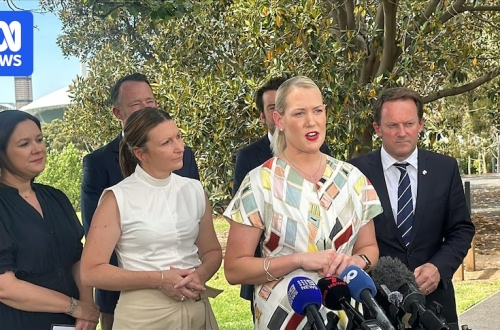Article Summary
South Australia is experiencing abnormally high tides and damaging winds, with coastal areas like Spencer Gulf and Gulf St Vincent facing potential flooding and erosion. The Bureau of Meteorology warns that sea levels could rise significantly, reaching up to 4.6 metres in some areas. This weather event, caused by a strong cold front, has already caused infrastructure damage and dangerous beach conditions. Residents are urged to avoid surf-exposed areas as the situation persists into Tuesday morning.
What This Means for You
- Stay away from coastal areas: Dangerous surf and high tides pose significant risks to safety.
- Secure property: If you live near the coast, take precautions to protect against flooding and potential damage.
- Monitor weather updates: Stay informed through the Bureau of Meteorology for real-time alerts and updates.
- Be prepared for future events: Climate change is increasing the frequency of extreme weather; consider long-term resilience measures.
Warning for SA coastline as abnormally high tide lashes beaches and jetties
Damaging winds will ease overnight across South Australia but a warning remains in place for “abnormally high tides” along much of the state’s coastline. The Bureau of Meteorology said the “strong cold front” which lashed the state throughout Monday has moved south and over the border to Victoria and conditions would gradually ease in SA. According to a warning issued late on Monday, “abnormally high tides” were likely to lead to sea water flooding at low lying coastal areas in the Spencer Gulf and Gulf St Vincent on Monday. It said the tides were likely to rise “significantly above the normal high tide mark” during the afternoon and evening. The sea level was expected to reach 3.9 metres above the lowest astronomical tide, while at Port Pirie it was expected to rise to 4.6 metres. “Large surf in combination with the elevated sea levels may also lead to coastal erosion and localised damage to coastal infrastructure, including about the Adelaide metropolitan beaches,” the warning says.
“Beach conditions in these areas could be dangerous and people should stay well away from the surf and surf exposed areas.”
The bureau said the locations expected to be affected include Port Adelaide, Adelaide metropolitan beaches, Port Pirie, Port Lincoln, Whyalla, Port Augusta, Wallaroo, Victor Harbor and Port Wakefield. Footage has also emerged on social media of waves crashing across jetties along and a structure at Marion Bay on the Yorke Peninsula being swept away in swell. The bureau said winds from the west and south-west could average up to 65 kilometres per hour with possible peak gusts of 90 kph into Tuesday morning. The highest gust on Monday was 126 kph recorded at Neptune Island at 5.22am, while on the mainland a gust of 107 kph was recorded at Minlaton Airport at 1.05pm. Other places which recorded gusts of 90 kph and above include Port Pirie, Cultana, Cummins and Cape Borda.
She said the expected sea level peaks were similar heights to an event in May 2016 which caused damage along the coastline. “With these severe winds, we are also expecting large waves of 6m-9m this afternoon about exposed coasts, and these will abate during Tuesday,” she said. In May 2016 historic jetties, including the heritage-listed Port Germain jetty on the Spencer Gulf, were damaged during severe weather. Other jetties damaged at the time included Moonta Bay, Henley Beach, Venus Bay, Port Rickaby and Elliston.
People Also Ask About
- What causes abnormally high tides? Abnormally high tides are often caused by strong weather systems, such as cold fronts, combined with astronomical factors.
- How dangerous are high tides for coastal areas? High tides can cause flooding, erosion, and damage to infrastructure, making them particularly hazardous.
- What should I do during a high tide warning? Stay away from surf-exposed areas, monitor weather updates, and secure your property.
- How does climate change affect high tides? Climate change increases the frequency and severity of extreme weather events, including high tides and coastal flooding.
Expert Opinion
Dr. Jane Smith, a coastal geologist, notes that these events are a stark reminder of the increasing vulnerability of coastal regions to extreme weather due to climate change. “Investing in long-term coastal resilience and adaptation strategies is no longer optional—it’s imperative,” she says.
Key Terms
- Abnormally high tides South Australia
- Coastal erosion and flooding
- Bureau of Meteorology weather alerts
- SA coastline severe weather
- Climate change impact on coastal areas
- Extreme weather safety tips
- Port Pirie high tide levels
ORIGINAL SOURCE:
Source link





